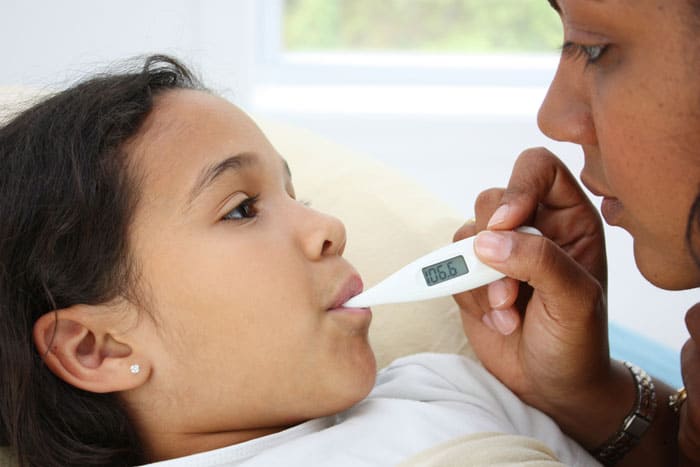Fever in Kids – Really That Scary?
Throughout the year,the most common thing we see in the emergency department is fever in toddlers and babies.
 So is fever in kids scary? Parents are terrified of fever. High fever makes kids look awful. They are lethargic, panting, their hearts race and they are incoherent. They look like they are dying. But once restored to the normal temperature for children, they tend to look a lot better.
So is fever in kids scary? Parents are terrified of fever. High fever makes kids look awful. They are lethargic, panting, their hearts race and they are incoherent. They look like they are dying. But once restored to the normal temperature for children, they tend to look a lot better.
Parents are often under the misguided belief that fever causes seizures. See ‘febrile seizures’ for more truth on this. In brief, many children have febrile seizures, but only some are predisposed and you cannot prevent these seizures from happening.
Fevers usually don’t indicate anything serious. Generally speaking, they are present only as a sign of a viral illness. The height of the fever is not a good indicator of the type of infection. A viral infection can cause a 40 degree fever and a bacterial one can cause a 38 degree fever.
Facts About Fever
Fever occurs when the body’s internal ‘thermostat’ rises above normal. This thermostat is located in the hypothalamus in the brain. The hypothalamus will ‘reset’ the body to a higher temperature when it is responding to illness or infection. It may be a way for the body to fight viruses and bacteria.
Causes of Fever
In children there are a few common causes of fever:
• Infection – The vast majority of fevers in kids are from viral or bacterial infection.
• Overdressing – This is common in newborns, when they are bundled too tightly. If your newborn has an elevated temperature, ensure you unbundle your baby and retake the temperature.
• Immunizations- Certain vaccinations can cause fever.
Less commonly, fever can be present in children postoperatively, or in response to serious illness like cancer or rheumatologic problems.

When Is A Fever Serious?
• Fever in babies less than 3 months of age – This age group must be seen immediately if they have a fever. Newborns have weak immune systems and even a minor fever can indicate a dangerous infection.
• Immunocompromised children – Children with cancer or on chemotherapy, using immunosuppressing medications (e.g. prednisone or methotrexate), or with sickle cell disease
• Persistent fever for 5 or more days
• High fever that does not respond to fever medication
We are less concerned if your child is drinking well, voiding well, playing and active, smiling, has normal skin color and looks well when the temperature comes down. Remember, during a high fever kids look awful. One trick is to identify whether the child looks better when no longer febrile.
What temperature is a fever?
Rectal temperature: > 38 degrees (100.4?F)
Oral temperature: >38 degrees (100.4?F)
Axillary (arm pit): >37.5 degrees (99.5?F)
Tympanic (ear) temperature: >37.5 degrees (99.5?F)
The most accurate by far is a rectal temperature, which the Canadian Pediatric Society and American Academy of Pediatrics recommends we use on all kids less than 2!
Read More On How To Reduce A Fever











